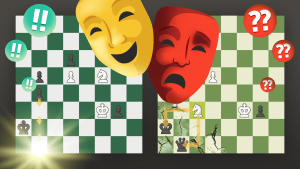
Openings for Tactical Players: Nimzo-Indian Defense
When a famous Grandmaster Aron Nimzowitch invented a new defense against 1.d4 which was later named after him, the new hyper modern opening took the chess world by storm. Many chess players were attracted by this solid, positional opening which would also provide excellent chances for counter play. The idea of the opening (1.d4 Nf6 2. c4 e6 3. Nc3 Bb4) is deceptively simple and yet very deep. Black tries to put the key e4 square under firm control (frequently he even plays b6 and Bb7 to increase his pressure there) and therefore, due to his inability to play e3-e4 White's Bc1 becomes very passive. Nimzowitch himself won many games where his opponents were unable to break the blockade (one of Nimzowitch's most beloved concepts!).
White has many different systems to deal with the Nimzo-Indian defense, but one of the most aggressive lines was invented by German GM Fritz Saemisch. He simply played 4.a3 allowing Black to double the White pawns by 4...Bxc3+ 5. bxc3. This line can be considered sort of a gambit. In a regular gambit one side sacrifices material to achieve certain goals. Here White allows Black to severely damage his Queen's side pawn structure, so most of the endgames will be simply lost for White. But as GM Tartakower once said: " God created a middle game between an opening and an endgame". So what does White get in return for his positional sacrifice? He gets two Bishops that can be potentially very dangerous, an opportunity to create a very strong pawn center by playing f3 and e4, and eventually a Kingside attack.
Lets look at a game where GM Saemisch created a text book example of White's attack. Try to find how Fritz Saemisch delivered the final blow. (Please remember that you can always replay the whole game from the first move if you click "Solution" and then "Move list".)

